Artist Interviews 2021
Morley 
By Laura Siebold
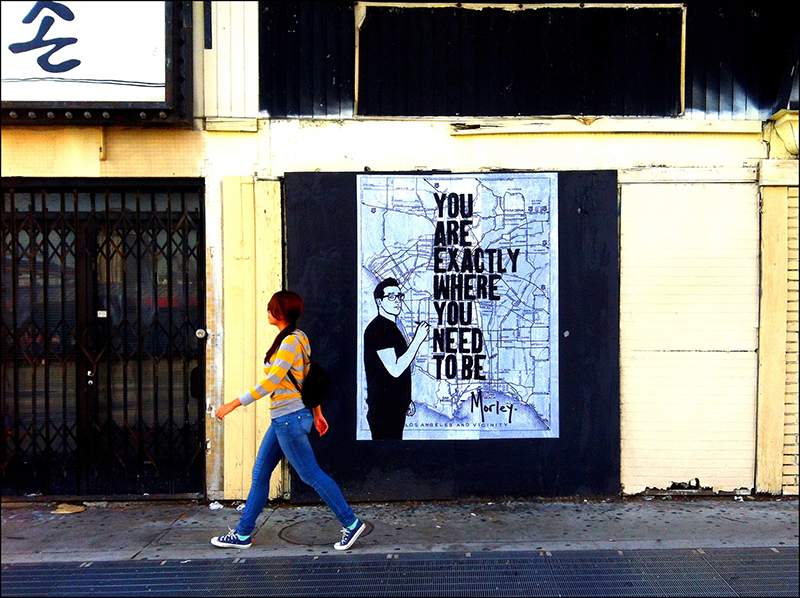
Poster Quotes by Morley
“If you’re reading this, there is still time.”
“I’ll see you on the other side of this.”
“We’re all just doing our best here.”
“I will wait until then is now.”
“In this day and age, it is a revolutionary act simply to give a shit.”
“I seem to have misplaced my master plan.”
“You don’t need me, but here I am anyway.”
“No one has ever been given permission to change the world.”
“I would do pretty much anything to not be forgotten.”
“Will work for a justified existence.”
“May all of our biographies contain at least one shocking twist.”
“Make your noise cut through the murmurs.”
“With reckless abandon, we shall crash the party of this life.”
“I will steal my heart back from this machine if it’s the last thing I do.”
“The curse of imagination is picturing the world as it should be.”
“Light clings to those with a boldness to stand awash in it.”
“If it makes you feel better just pretend some company paid me to put this here.”
“You are exactly where you need to be.”
“So here we are, in the last place we expected to be … and isn’t it magnificent?”
“Despair is a thief that shall steal our days no longer.”
“Actions speak louder than status updates.”
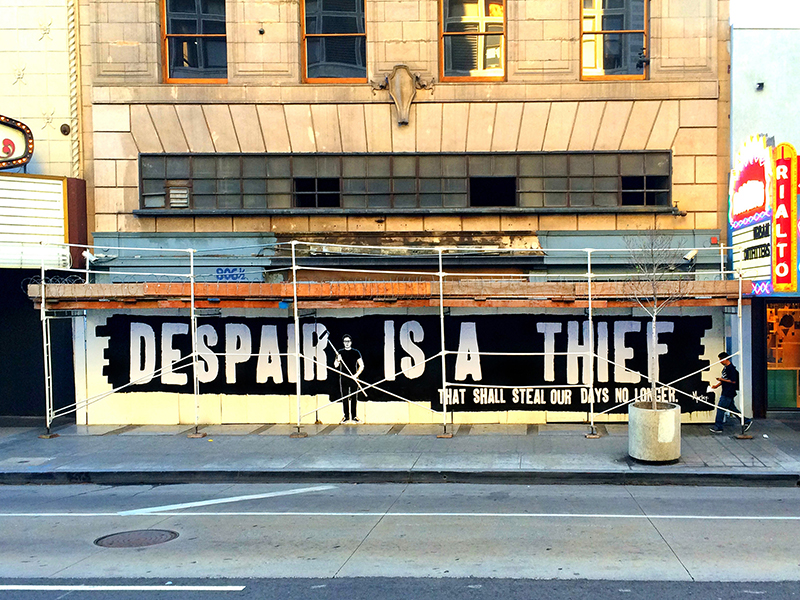
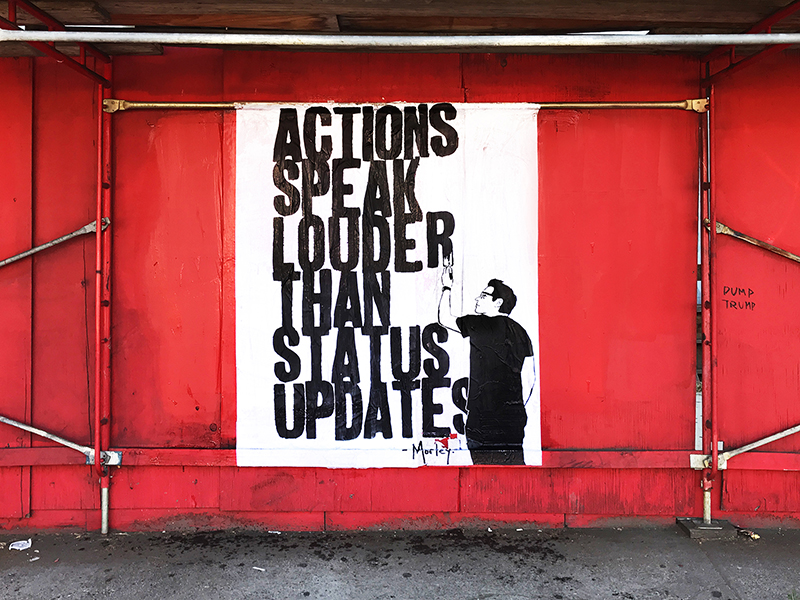
Morley is a Los Angeles-based street artist, originally from Iowa City, who paints carefully crafted messages in the form of typographic posters on construction site fences,
junction boxes, public bus benches, boarded-up stores, and other empty wall spaces across Los Angeles. His black and white images are centered on the message, written in bold,
capitalized letters, oftentimes expressing an underlying thought-provoking response to the current mood of the city. An iconic illustration of the artist, often depicted being
in the process of writing the message, accompanies every project. Many times, we only see the artist’s spinal image; he does not turn to the spectator observing the message.
The artist in the illustration paints his message with a Sharpie marker or a paintbrush. Morley’s images seem to express the impermanence of art; the message is there to be read,
and maybe to inspire, but not to stay.
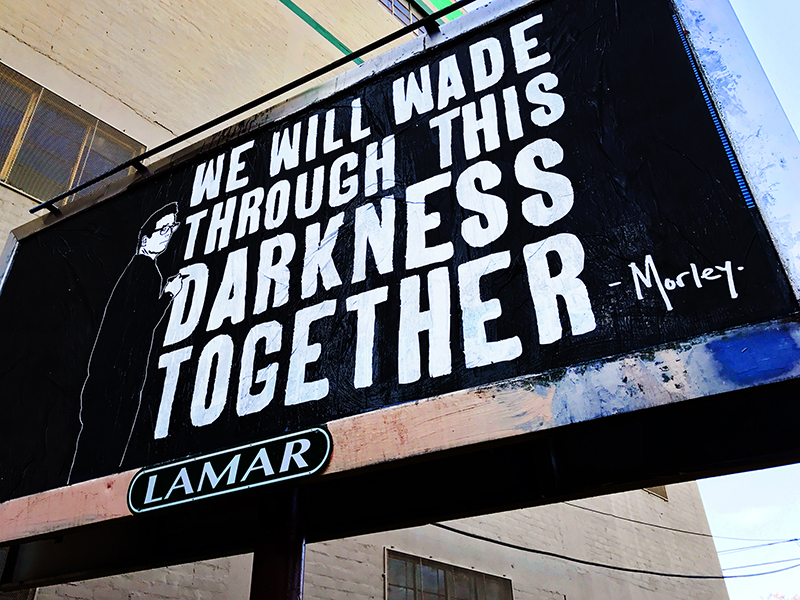
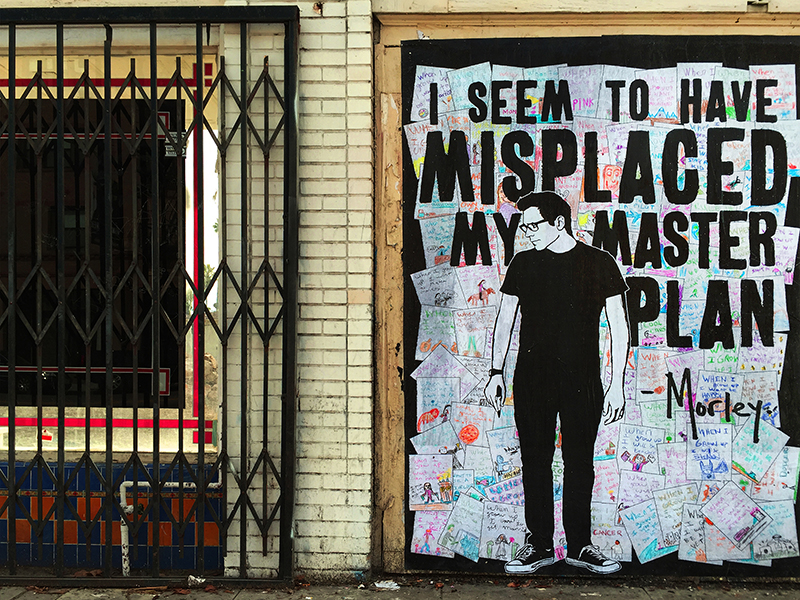
Morley’s critical street art presents both a counteraction and response to the types of billboards and advertisements with rather void, shallow messages scattered across the
city of Los Angeles. It is a reaction to the idea of urban community and space with its ever-changing rhythm. Morley knows how to uncover clichés, surprise, and reassure
fellow voyeurs unknowingly roaming the city in search of meaning.
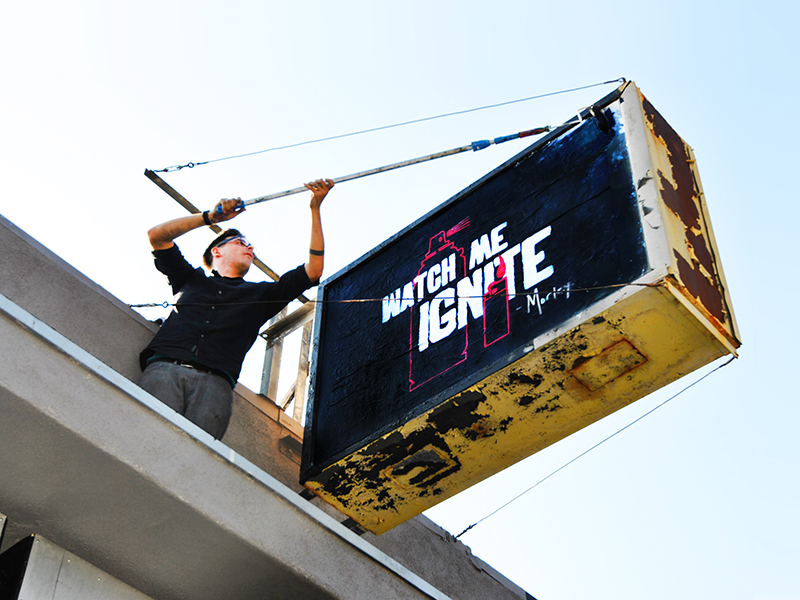
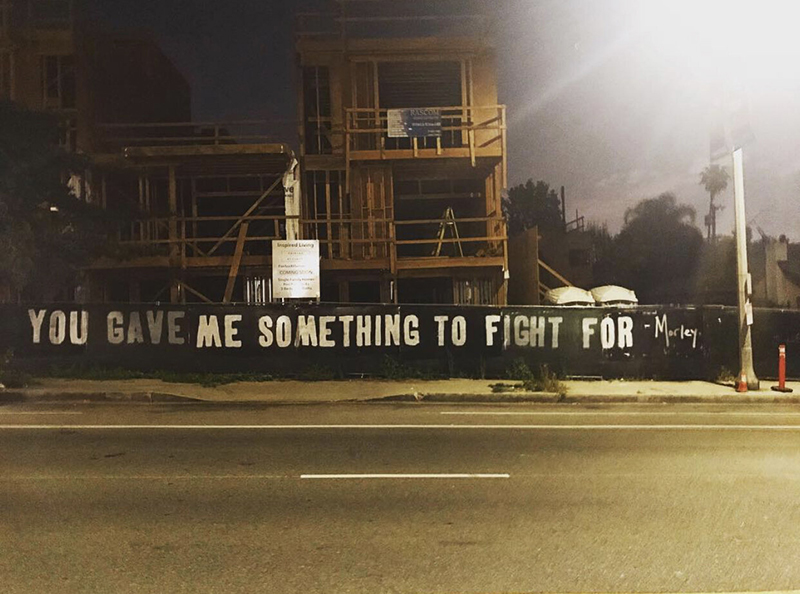
The artist’s first encounter with street art occurred during his art school studies at The School of Visual Arts in New York, NY. While being inspired by the street art appearing
in NY at that time, Morley sought to find his personal style. In 2010 with the rise of a street art scene in Los Angeles, the artist turned his individual style of
“public expressions of hope, humor, poetic reverie and relatable frustration” from stickers in NY subways to public contributions of a greater size. Morley creates street art
to circumference his “frustration at what felt like barriers towards any kind of creative expression that doesn’t turn a profit”. Instead of waiting for approval for audience exposure,
Morley chose his own path of interaction and connection with the world through his art:
I got tired of waiting for someone to tell me my voice had a place in this world. I’ve always considered myself a writer first [Morley has published two books titled “If You’re Reading This, There’s Still Time” (2014) and “Let’s Burn This Moment Down To The Filter” (2018)
featuring prints of his art and commentary, N/A] and in the desperate grasp to connect with the world I began putting messages on stickers, then posters. These posters grew in size and ambition and I started included a drawing of myself to make the source of these messages a person, rather than a logo or a brand-but an unglamorous, unfashionable, regular person. My messages are primarily to reach people like me, similarly frustrated, looking for something that could inspire them, make them smile, give them hope, or offer a bit of wisdom. […] Maybe I’ll just say that I’m inspired by the notion that people that pass something I’ve pasted up could share in something-that we could relate to each other and discover that we’re not as alone in our struggles as we often feel.
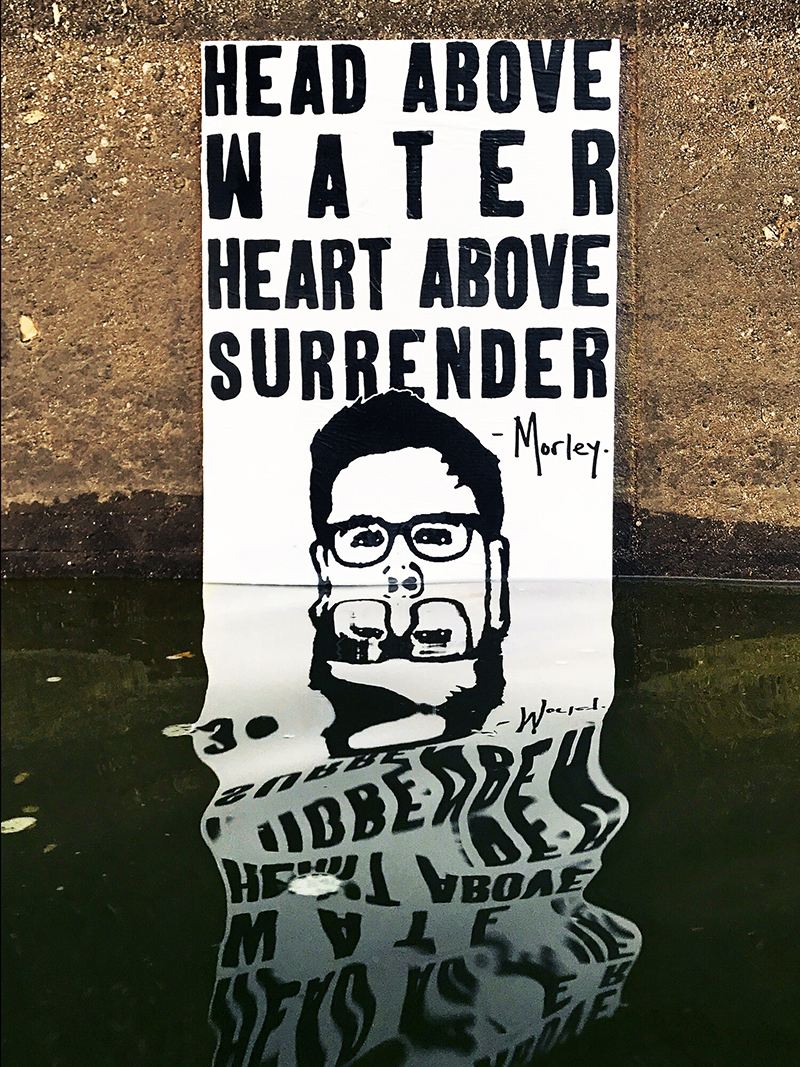

Morley’s work is a means of human interaction in a city that sometimes seems to put corporate and financial success before individual fulfillment. Just by being himself, the artist offers guidance to navigate the “war of life”. In his interview for Art Squat Magazine, Morley recalls the glory days of the Los Angeles street art scene:
There were a lot of really exciting things going on in the street-lots of distinct voices and ideas, lots of color. There were a lot of great blogs that covered the scene and a lot of great galleries that were eager to put on shows with people who didn’t have any experience selling their art and that was really empowering. There’s less of that now but it’s made the true believers and those who were never in it for fame and money stick around. I’ve made a bunch of friends and it’s always an honor to get to meet people whose work you admire.
In our interview, Morley mentioned that “creating art with an environment in mind often creates much stronger statements”. Being faced with the temporariness of his artwork in public spaces though, he needs to take immediate action whenever he sees a suitable spot. The artist is very mindful of the special character of the environment and its communities: “(I’d never put a message about materialism in Compton or a message about perseverance in Beverly Hills). I also try to do as little property damage to local/small businesses as vandalism is less my aim than uncompromised communication, if that makes sense.”
In our interview, we asked Morley about his attitude towards temporariness, the reason behind offering printed versions of his artwork, and the purpose of (his) art:
Well-for me it’s a funny thing as I’ve struggled to turn my artwork into something you’d want to hang on a wall. For me, my art isn’t really finished until it’s on the street. I love the texture and the context that the street gives it. I’m always honored that anyone would want to hang something I’ve made on their walls at home but these were always messages that were supposed to be stumbled over as someone is going about their day. The messages change a bit when you remove that intention. That said, if someone finds a message of mine that they really want to be reminded of every day than I want to be able to give that to them. To answer your question-I think that art’s primary purpose is to help us all understand who we are, what we are, why we are, how we can fix the broken pieces of ourselves. In that journey, everything is temporary. Even us.
Morley feels that the pandemic has limited his public expression in taking on full-time dad duties (Morley has a two-year-old son) and considering the risks he is exposed to during his outside work. The street artist is hopeful that he will be able to resume creating and expressing himself once the toll of the pandemic has lessened. While Morley is an artist at heart, he admits that if he only had one more chance for a project in his lifetime, he would choose his son: “If I can help guide him towards being a kind, brave, patient and fulfilled person-it’ll be ten times the value of everything else I’ve contributed to this world.”
His words are a reminder of what really matters – right here, right now.
For more information on Morley and his work, check out the following resources:
Official Morley Website
Additional Sources consulted in the making of this interview:
https://iammorley.squarespace.com/faq


|
|

